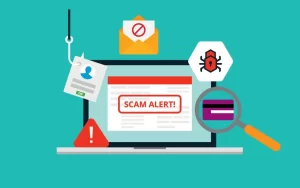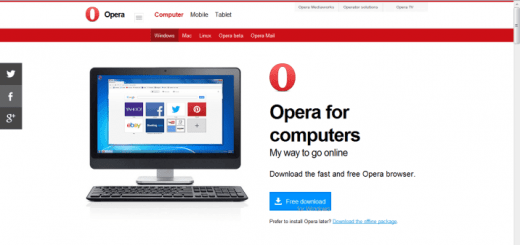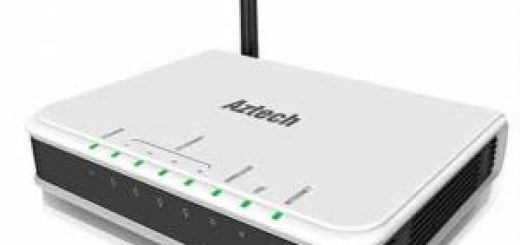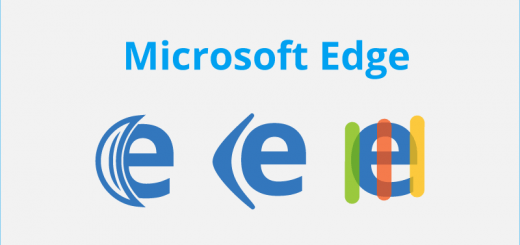Simple rules for emailing and How to protect yourself against spam emails
Spam email is used to deliver unwanted materials, It is annoying and malicious, It causes considerable harm to your computer and yourself, You should not reply to email unless you are certain that the message comes from a legitimate source, Spam can not be stopped, But certain things can be done to reduce the number of spam emails coming into your inbox.
How to reduce spam emails
You should not open and reply to spam emails, Even if you open an email, Do not download or click on any links or files inside email Spam, Also, You should not reply to these spam emails, It is common that even the experts break the first rule, The users are still tricked into opening these mails using attractive headlines and offers.
You should not respond to any spam, Most spammers verify receipt and log responses, The more you respond, the more spam you’re likely to receive, You have to think before you click ‘unsubscribe’, The spammers send fake unsubscribe letters, in an attempt to collect active email addresses, If you click ‘unsubscribe’ in one of these letters, It may simply increase the amount of spam you receive.
You should not stop email spam using the unsubscribe link, Every mail list, genuine or spammy carries the link inside to unsubscribe from the subscriber list, If you find a particular mail spammy, it is recommended not to unsubscribe the mailing list, Clicking on unsubscribe list is in a way confirming that your email address is active and you received this mail.
You have to keep your browser updated, You should make sure that you use the latest version of your web browser and that all of the latest Internet security patches have been applied, Do not respond to emails from unknown sources and you have to use anti-spam filters.
You can submit your email address to genuine websites, But never publicly show your email address, so, the email owner is exposing that email ID to the world of spammers, The spammers have specialized bots and crawlers created to continuously crawl websites & harvest new email addresses.
The website & domain name owners should be careful about revealing email addresses publicly on their websites, One of the main sources of spam emails is from e-commerce sites constantly sending offers about new products, So, You have to dedicate a separate email for receiving these types of emails.
You can use Anti Spam tools, There are plenty of Anti-Spam tools available in the market like Spamihilator, Spam Assassin, MailWasher Free, CleanMail HomePaid etc, Some of them are free and some paid tools, Paid tools may not necessarily be the best, but most of them carry additional features and are more effective.
Some ISP also offers email filters, Check with your ISP, if they have spam filtering software, You may have a subscription fee, When installed, you will not receive any blacklisted emails inside your inbox, You should always be vigilant when receiving or responding to emails, You have to make sure that your spam filter is switched on to minimize the risks.
You should not threaten spammers, The spammers have their rights, and within certain terms and conditions, what they do is legally allowed, By threatening the spammer, you are exposing to legal action, Also, It is not practically always possible to take legal action against the spammer.
You should not open emails that you suspect are scams, Do not open attachments from unknown sources, The attachments might be viruses or spyware that download to your machine when you open the attachment file, If you don’t know whom the attachment is from or if you weren’t expecting it.
You should not click on the links in emails from unknown sources, You should not make purchases or charity donations in response to spam emails, You should not click or remove, or reply to unwanted emails, You have to delete all addresses of previous parties in the email string, before forwarding or replying.
Most Microsoft and other email clients come with spam filtering as standard, Ensure yours is switched on, Most spam and junk filters can be set to allow email to be received from trusted sources & blocked from untrusted sources.
If you choose a webmail account such as Gmail, Hotmail and Yahoo Mail, You have to make sure that you select one that includes spam filtering and it remains switched on, Most internet security packages contain spam blocking.
You should keep your versions of Windows and Outlook up to date by checking your Control Panel and setting it to auto-update, You have to keep your system clean of viruses and spyware by running anti-virus and spyware checkers regularly, When the email looks suspicious, don’t risk your personal information by opening or responding to the message.
When you receive a phishing e-mail message, do not respond to it, and Don’t open junk mail at all, Phishing is a type of online identity theft that uses e-mail and fraudulent websites that are designed to steal your data or information such as credit card numbers, passwords, account data or the other information.
You should not risk your personal information by responding to it, You have to delete junk email messages without opening them, Opening spam can alert spammers or put an unprotected computer at risk, Many links in phishing email messages take you to phony sites that encourage you to transmit the personal or the financial information.
You should not click on the link in an email message unless you are sure of the real target address, URL, or a valid sender, Most e-mail programs show you the real target address of the link when you hover the mouse over the link within the message.
You have to make sure that the spelling of words in the link matches what you expect, The spammers and the scammers use URLs with typos and transposed letters in them that are easy to overlook, such as “Retdail.”
The beacon within the oceans transmits the message or data back to the source, images within email messages —also known as web beacons — can be used to secretly send the message back to the sender, The spammers rely on the information returned by these images to locate active e-mail addresses.
The images can contain harmful codes & they can be used to deliver the spammer’s message despite filters, The best defense against web beacons is to prevent the pictures from downloading until you have had a chance to review the message, Most offline mail clients include these settings.
Don’t trust the sender information in an e-mail message, If the email message appears to come from a particular sender that you know and trust, use the same precautions that you would use with any other email message, and don’t forward chain email messages.
Spoofing is email activity in which the sender address and the other parts of the email header are altered to appear as though the email originated or was sent from a different source, This is a common practice of spammers and it is one of the hardest to combat as there may be legitimate reasons to spoof an address.
When you receive a suspicious email that looks like it comes from a company that you know and trust, report the email to the faked or spoofed organization, You have to contact the organization directly (not through the email you received) and ask for confirmation on the validity of the message, Or call the organization’s toll-free number and speak to the customer service representative.
Don’t enter personal or financial information into pop-up windows, One common phishing technique is to launch a fake pop-up window when someone clicks the link in a phishing e-mail message, To make the pop-up window look more convincing.
When the pop-up window looks official or claims to be secure, avoid entering sensitive information, because there is no way to check the security certificate, Close pop-up windows by clicking the red X in the top right corner as the Cancel button may not work as you’d expect it would.
You have to only open email accounts with providers that include spam filtering, You have to choose an antivirus and Internet security solution that also includes advanced anti-spam features, You should set up multiple email addresses, It’s a good idea to have at least two email addresses ( private email address and Public email address.
Private email address
You should have a private email address that should only be used for personal correspondence Because the spammers build lists of possible email addresses by using combinations of obvious names, words, and numbers.
You should try to make this address difficult for the spammer to guess, If your private address is discovered by the spammers, you should change it, Although this may be inconvenient, changing your email address will help you to avoid spam.
Your private address should not simply be your first and last name, you should protect the address, You should not publish your private email address on publicly accessible online resources, When you need to publish your private address on a website, it’s safer to do this as a graphics file rather than as a link.
Public email address
You should have a public email address, You use this address when you need to register on public forums and in chat rooms, or to subscribe to mailing lists and other Internet services, There are useful tips that will also help you to reduce the volume of spam you receive via your public email address, You have to treat your public address as a temporary address.
The chances are high that the spammers will rapidly get hold of your public address – especially if it is frequently being used on the Internet, You should not be afraid to change your public email address often, You have to consider using several public addresses, So, you’ll have a better chance of tracing which the services may be selling your address to the spammers.
Spam email and phishing scam risks and Can it be dangerous to open spam emails?




